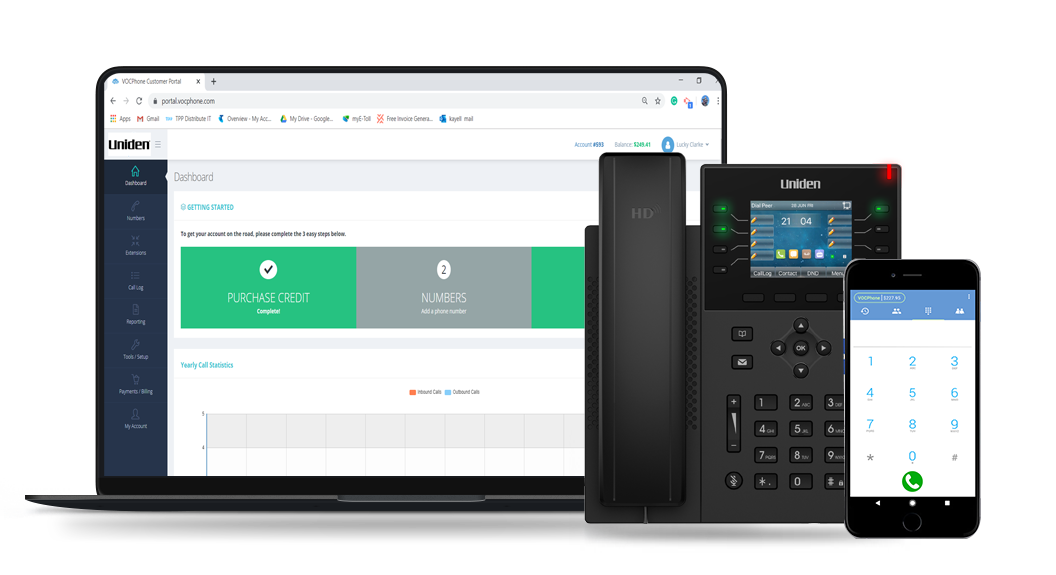
Debunking common myths about virtual business phone systems
Don’t let misinformation hold your business back. Discover the truth about virtual business phone systems and why they’re the future of business communication.

Don’t let misinformation hold your business back. Discover the truth about virtual business phone systems and why they’re the future of business communication.
Despite the growing shift towards remote work, cloud-based tools, and digital transformation, many businesses are still holding back when it comes to adopting virtual business phone systems. One of the biggest reasons? Persistent myths and misconceptions create unnecessary fear or doubt around making the switch.
Some business owners assume these systems are unreliable or too complicated. Others worry that they lack the professionalism or features of traditional phone systems. And then some simply think they’re only for big companies with complex IT infrastructure. The truth is, none of these assumptions reflect how modern virtual phone systems work.
Virtual business phone systems are built for flexibility, scale, and efficiency. They’re designed to support teams—big or small—working from anywhere, without compromising on call quality or functionality. If outdated information is holding your business back, this page will clear things up and help you make a more informed decision about upgrading your communications.

The days of choppy VoIP calls are long gone. With the availability of NBN and faster broadband across Australia, virtual phone systems now offer HD voice quality that often surpasses traditional landlines. Technologies like jitter buffering, packet prioritisation, and echo cancellation mean conversations sound clearer and more natural. As long as your business has a stable internet connection, call quality is consistent, whether you’re calling down the street or globally.
Many small and medium businesses believe virtual phone systems are too complex or expensive for their needs. But, cloud-based systems are highly scalable and designed with growing businesses in mind. You can start with a single user and expand as your team grows, without investing in costly hardware or infrastructure. With features like auto-attendants, call queues, and business hours routing, even a solo operator can present a polished, enterprise-grade image to clients.
Unlike traditional phone systems that require technician visits, hardware installs, and complex cabling, virtual systems are designed for simplicity. Most can be deployed within hours—sometimes minutes—using your existing devices. A user-friendly web portal or mobile app allows you to customise settings, add users, route calls, and more without specialised IT skills. Many providers offer local onboarding support and video tutorials to make setup and maintenance stress-free.
There’s a common misconception that virtual systems are “barebones” or lack business-grade tools. In truth, they’re packed with powerful features often unavailable in traditional setups. These include voicemail-to-email, CRM integration, advanced call analytics, mobile softphones, call recording, and live status dashboards. Features like custom greetings and call scheduling help deliver a tailored customer experience, whether your team is in the office or working remotely.
An auto-attendant—also known as a virtual receptionist—automatically answers incoming calls and routes them to the appropriate department or team member based on user input. This feature eliminates the need for a live receptionist and ensures that your business maintains a professional image 24/7. Callers can choose from a menu to be directed quickly to the right person. It reduces missed calls, improves customer satisfaction, and saves time for your team. Best of all, you can customise greetings, add after-hours routing, and update call flows in real time—all from a user-friendly dashboard.
With voicemail-to-email, you never have to worry about checking a phone inbox again. This feature automatically sends any voicemail left on your business number to your nominated email address—either as an audio attachment, a text transcription, or both. It’s perfect for busy professionals who are always on the move and may not be near their desk phone. Voicemail-to-email keeps communication centralised, helps you respond faster to customer enquiries, and ensures no message gets lost. Some platforms even integrate with your CRM, so you can keep a record of interactions with leads and clients.
Cloud-based phones come with dedicated mobile apps for iOS and Android, letting you take your business line wherever you go. These apps allow users to make and receive calls, transfer calls between devices, and view call history—all from a smartphone or tablet. This makes remote work seamless and allows teams to stay connected whether they’re on the road, working from home, or at a job site. It also separates work and personal calls, as you can use your business number without giving out your private mobile number. Most apps use encrypted connections, adding an extra layer of security.
Call analytics give you valuable insights into how your business communicates. You can track metrics like call volume, average wait times, missed calls, call duration, & more. This data is presented in real-time dashboards and downloadable reports, helping you monitor team performance, staffing needs, and customer service efficiency. It’s useful for sales and support teams where understanding caller trends can guide training, resourcing, and workflow improvements. Real-time analytics also help identify bottlenecks in the call flow so you can make proactive improvements that lead to better CX.
Call forwarding allows incoming calls to be redirected to another number, device, or team member automatically or on demand. For example, you can forward office calls to a mobile during after-hours or when you’re out of the office. You can also set conditional forwarding (e.g., if busy, forward to voicemail; if no answer, forward to colleague). This ensures that important business calls are never missed and customers can always reach a live person. With these systems, you can update call forwarding settings from an online portal—no need to wait for tech support or make changes manually.
At Uniden, we understand the communication challenges that Australian businesses face. That’s why we provide reliable, flexible, and easy-to-manage cloud-based business phone systems tailored to your business needs.
Whether you're scaling up, working remotely, or simply looking to cut costs, our solutions help streamline communications without compromising professionalism. With local support, powerful features, and unmatched reliability, we’re here to help your team connect from anywhere, anytime.

A virtual business phone system can give your business the flexibility, scalability, and professionalism it needs to thrive in the modern world.
It’s a cloud-based phone service that lets businesses make and receive calls over the internet instead of traditional phone lines.
No. You can use your existing devices—smartphones, tablets, or computers—with apps or browsers, and choose to add VoIP desk phones if needed.
Yes, most providers allow you to port your existing number over, so your business keeps its established contact identity.
Yes. Virtual systems use encrypted protocols, secure data centres, and authentication features to ensure your communication stays protected.
Absolutely. Team members can take and manage business calls from anywhere, making virtual phone systems ideal for hybrid work environments.